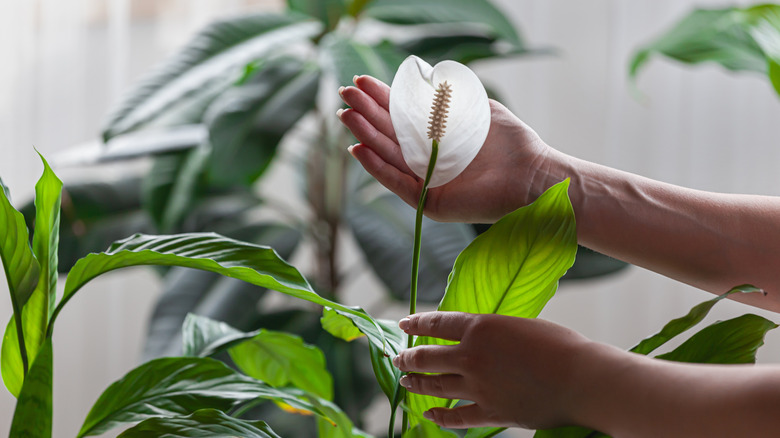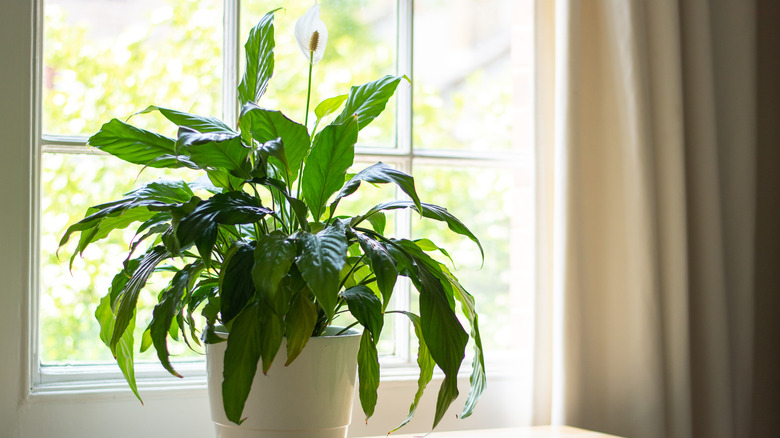Here's What To Do If Your Peace Lily Has Given Up Flowering
Peace lily plants always look great when you first get them, but after a while, you may come up against a few problems. If you didn't know already, the peace lily isn't shy about letting you know when you're doing something wrong, especially when it comes to watering. One of the telltale signs your peace lilies are in trouble is when they wilt and look like they are on death's door. You're probably underwatering, but if the droopy leaves are turning yellow, you may have overwatered. Thankfully, the plant easily springs back to life — looking healthy again once you start watering correctly. A slightly more puzzling problem you might face with your peace lily plant though, is when it stops flowering.
Thriving peace lilies still look great without flowers if they are growing well with healthy, glossy green leaves, but you probably bought your plant to enjoy those lovely white blooms. There are several reasons your peace lily may not be blooming for you, and many of these have common sense solutions, like not having enough light, being watered incorrectly, not getting enough nutrients, or perhaps the roots are squashed in a pot that is too small, or the plant is getting too old to bloom. So let's take a closer look at some of the things you can do to help your plant.
How to help your peace lily bloom again
Firstly, make sure your peace lily gets enough light. Ideally, place it near an east-facing window so it gets around 3 to 4 hours of bright, indirect morning light. If you don't have an east-facing window, bring the plant further into the room to avoid leaves being burnt by strong direct sunlight. The best alternative, however, is to invest in a grow light, as this will give you the most control.
Next, ensure you're not underwatering your peace lily. The plant will droop dramatically to tell you it needs watering, but if you let it get to this stressed state too often, the plant is probably using energy normally dedicated to growing flowers to stay alive instead. Use a moisture meter to determine whether your plant needs watering more often. The peace lily also loves humidity, which you can achieve with regular misting or by placing a small glass of water to evaporate into the air around the plant.
You can encourage blooms to grow during spring and summer by fertilizing your peace lily. Start in late winter and repeat every six weeks. Your peace lily needs potassium in the spring and autumn, so you can boost your plant's chances of flowering by adding banana peel to the soil. Finally, check to see if the plant needs more space for roots to spread out and grow or prune the roots to maintain the plant in the same pot.

